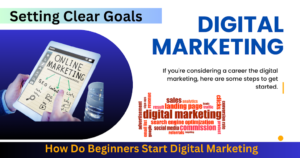How Do I Create and Sell a Course Online:
Introduction
Table of contents
Choosing Your Course Topic
- Researching market demand
- Personal expertise and passion
- Competition analysis
Creating Engaging Course Content
- Structuring your content
- Selecting the right media (text, video, or audio)
- Incorporating interactivity
Building Your Online Course Platform
- Selecting a platform (self-hosted, third-party, or marketplace)
- Customizing your platform
- Integrating e-commerce features
SEO Optimization for Your Course
- Keyword research and usage
- Meta descriptions and tags
- High-quality backlinks
Marketing Your Online Course
- Content marketing strategies
- Social media promotion
- Email marketing
Pricing and Monetization
- Setting the right price point
- Payment gateways and security
- Upselling and cross-selling
Launching Your Course
- Pre-launch activities
- Promotion strategies
- First customer interactions
Providing Exceptional Support
- Handling customer inquiries
- Addressing technical issues
- Gathering feedback
Scaling Your Online Course Business
- Expanding your course catalog
- Partnering with influencers and affiliates
- Automating processes
Leveraging User-Generated Content
Embracing Mobile Optimization
Continuous Improvement
Community Building
Monitoring Analytics
Diversity and Inclusivity
Ethical Marketing
Legal and Copyright Considerations
Exploring International Markets
Conclusion
FAQ
Choosing Your Course Topic:
Researching Market Demand
Before diving into course creation, it’s essential to identify a topic that resonates with your goal audience. Start by researching the demand for courses in your niche. Utilize tools like Google Trends and keyword research to understand the current market trends.
Personal Expertise and Passion
Select a subject that aligns with your expertise and passion. This will not only make the content creation process enjoyable but also ensure you can provide valuable insights and knowledge to your students.
Competition Analysis
Analyze your competitors. Identify their strengths and weaknesses, and find a way to differentiate your
Creating Engaging Course Content:
Structuring Your Content
Effective course content should be well-structured and easy to navigate. Use logical modules and lessons to guide your students through the learning journey. Each lesson should have clear learning objectives.
Selecting the Right Media
Consider the best media format for your content. Will it be primarily text-based, video-based, or audio-based? Visual and interactive elements can enhance engagement.
Incorporating Interactivity
Engage your learners through quizzes, assignments, and discussions. Interaction not only enhances the learning experience but also encourages participation and retention.
Building Your Online Course Platform:
Selecting a Platform
Choose a platform for hosting your course. Options include self-hosted solutions, third-party platforms, or marketplaces like Udemy and Coursera. Select the one that best suits your needs.
Customizing Your Platform
Customize your platform to reflect your brand. Use your logo, color schemes, and personalized branding elements to create a unique course environment.
Integrating E-commerce Features
Provide a safe payment gateway so that people can purchase courses. Make sure the purchasing process on your site is simple and intuitive.
SEO Optimization for Your Course:
- Keyword Research and Usage: Optimize your course content for search engines by conducting keyword research. Use the “How do I create and sell a course online” keyword strategically in your content to improve search visibility.
- Meta Descriptions and Tags: Craft compelling meta descriptions and tags for your course pages. These components are essential for drawing in prospective students.
- High-Quality Backlinks: Build high-quality backlinks to increase the authority of your course pages. Collaborate with other websites and content creators in your niche for this purpose.
Marketing Your Online Course:
Content Marketing Strategies
Provide insightful content that tackles the issues and interests of your target audience. Share this content on your website and social media to build trust or attract potential learners.
Social Media Promotion
Use social media platforms to establish a connection with your viewers. Utilize paid advertising, influencers, and user-generated content to expand your reach.
Email Marketing
Build an email list and send personalized promotions to your subscribers. One effective method for nurturing prospects and turning them into paying clients is email marketing.
Pricing and Monetization:
Setting the Right Price Point
Determine the optimal price for your course. Consider factors such as content quality, competition, and the perceived value of your offering.
Payment Gateways and Security
Choose a secure payment gateway to protect both your business and your customers. Ensure data encryption and follow industry best practices for online transactions.
Upselling and Cross-Selling
Explore opportunities to upsell and cross-sell your courses. Offer bundle deals or additional resources to maximize your
Launching Your Course:
- Pre-Launch Activities: Build anticipation for your course by promoting it before the official launch. Offer exclusive early access or discounts to generate initial interest.
- Promotion Strategies: Utilize various marketing channels to create a buzz around your course. Engage with your audience through webinars, live Q&A sessions, and informative blog posts.
- First Customer Interactions: Deliver a remarkable first impression to your early customers. Provide exceptional customer support and gather feedback to enhance your course.
Providing Exceptional Support:
Handling Customer Inquiries
Address customer inquiries promptly and professionally. Excellent support enhances your reputation and fosters positive word-of-mouth.
Addressing Technical Issues
Be prepared to troubleshoot technical issues that your students may encounter during the course. Quick resolutions are vital for a positive learning experience.
Gathering Feedback
Collect feedback from your students to continuously improve your course. Implement necessary changes to enhance its quality.
Scaling Your Online Course Business:
Expanding Your Course Catalog
As you gain experience, consider expanding your course offerings. A diverse catalog can attract a wider audience and boost your revenue.
Partnering with Influencers and Affiliates
Collaborate with influencers and affiliates to reach a broader audience. Partnerships can significantly increase your course’s visibility.
Automating Processes
Streamline your course management by automating administrative tasks. This will free up more of your time to focus on content creation and marketing.
Leveraging User-Generated Content:
Encourage your students to actively participate in your course. Allow them to share their success stories, experiences, and insights within the course community. User-generated content not only adds a personal touch but also helps in building a sense of belonging among your learners.
Embracing Mobile Optimization:
Make sure your course platform is mobile-friendly given the rise in the usage of mobile devices. For students who are constantly on the road, mobile optimization is essential to provide a smooth learning experience. Ensure that the videos, quizzes, and course materials are usable and available on tablets and smartphones.
Continuous Improvement:
In the dynamic world of online education, never stop improving. Regularly update your course content to reflect the latest developments in your field. By keeping your course materials relevant and up-to-date, you’ll maintain the trust of your existing students and attract new ones.
Community Building:
Foster a sense of community among your students. Create discussion forums, online meetups, or social media groups where learners can interact and support each other. A strong community can enhance the overall learning experience and lead to increased course retention.
Monitoring Analytics:
Make use of analytics tools to track your online course’s effectiveness. Analyze data on student engagement, completion rates, and drop-off points. This data will provide valuable insights to make data-driven improvements to your course.
Diversity and Inclusivity:
Consider the diverse backgrounds and learning preferences of your audience. Ensure your course materials are inclusive and cater to a wide range of learners. Offer transcripts for videos, provide alternative text for images and accommodate different learning styles.
Ethical Marketing:
When marketing your course, maintain ethical standards. Avoid misleading claims or over-promising. Building trust with your audience is crucial for long-term success. Honest and transparent marketing builds a positive reputation.
Legal and Copyright Considerations:
Be aware of copyright and legal considerations when creating your course content. Ensure that you have the right to use all materials in your course and respect intellectual property rights. Avoid plagiarism and always give proper attribution.
Exploring International Markets:
Consider expanding your reach to international markets. Translate your course materials into different languages to cater to a global audience. Keep in mind the cultural differences and adapt your content and marketing strategies accordingly.
Conclusion
In 2023, creating and selling online courses remains an excellent way to share your expertise, passion, and knowledge with a global audience. With the right strategy, you can turn your skills into a thriving online business. By choosing the right topic, creating engaging content, optimizing for SEO, and implementing effective marketing and support strategies, you can embark on a successful online course journey.
FAQ.
Q1: How do I determine the right course topic?
Selecting an appropriate course topic entails investigating consumer demand, matching your area of expertise, and assessing competitors. It needs to be a topic you are enthusiastic about and one that the intended audience could find interesting.
Q 2. What’s the best media format for online courses?
The choice of media format depends on your content and audience. You can use text, video, audio, or a combination of these to make your course engaging and effective.
Q 3: How can I optimize my online course for SEO?
SEO optimization involves keyword research, meta descriptions, and backlinks. It’s crucial to use relevant keywords, create enticing meta tags, and build high-quality backlinks to increase your course’s visibility in search engines.
Q 4: What marketing strategies are effective for online courses?
Effective marketing strategies include content marketing, social media promotion, and email marketing. Building anticipation with pre-launch activities and promotions also plays a significant role.









